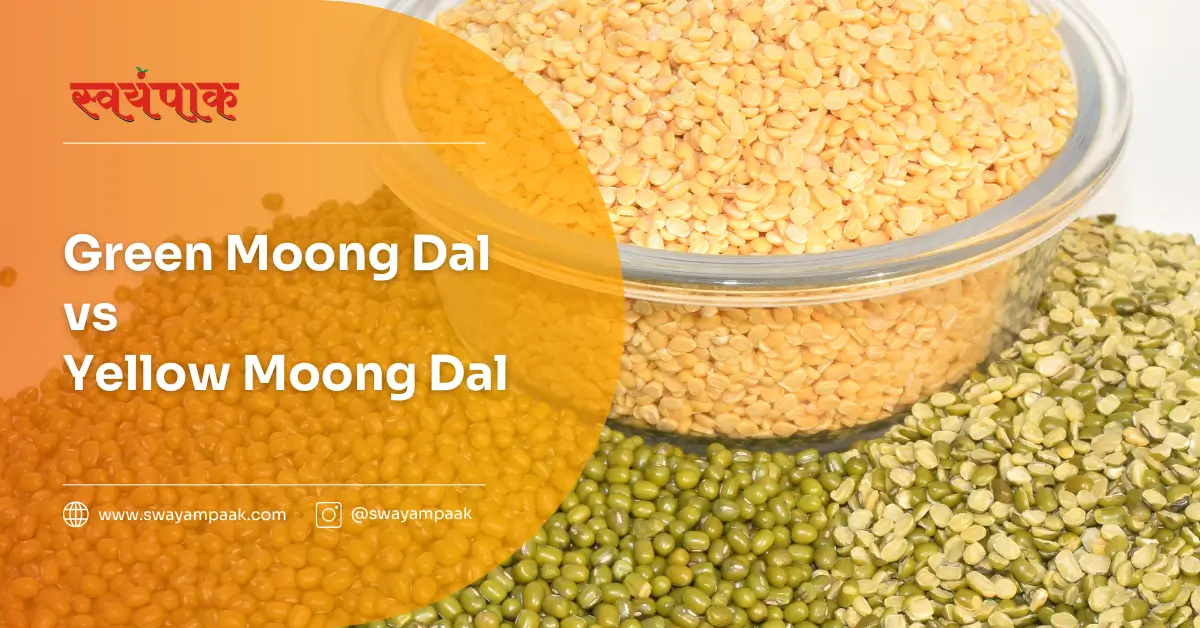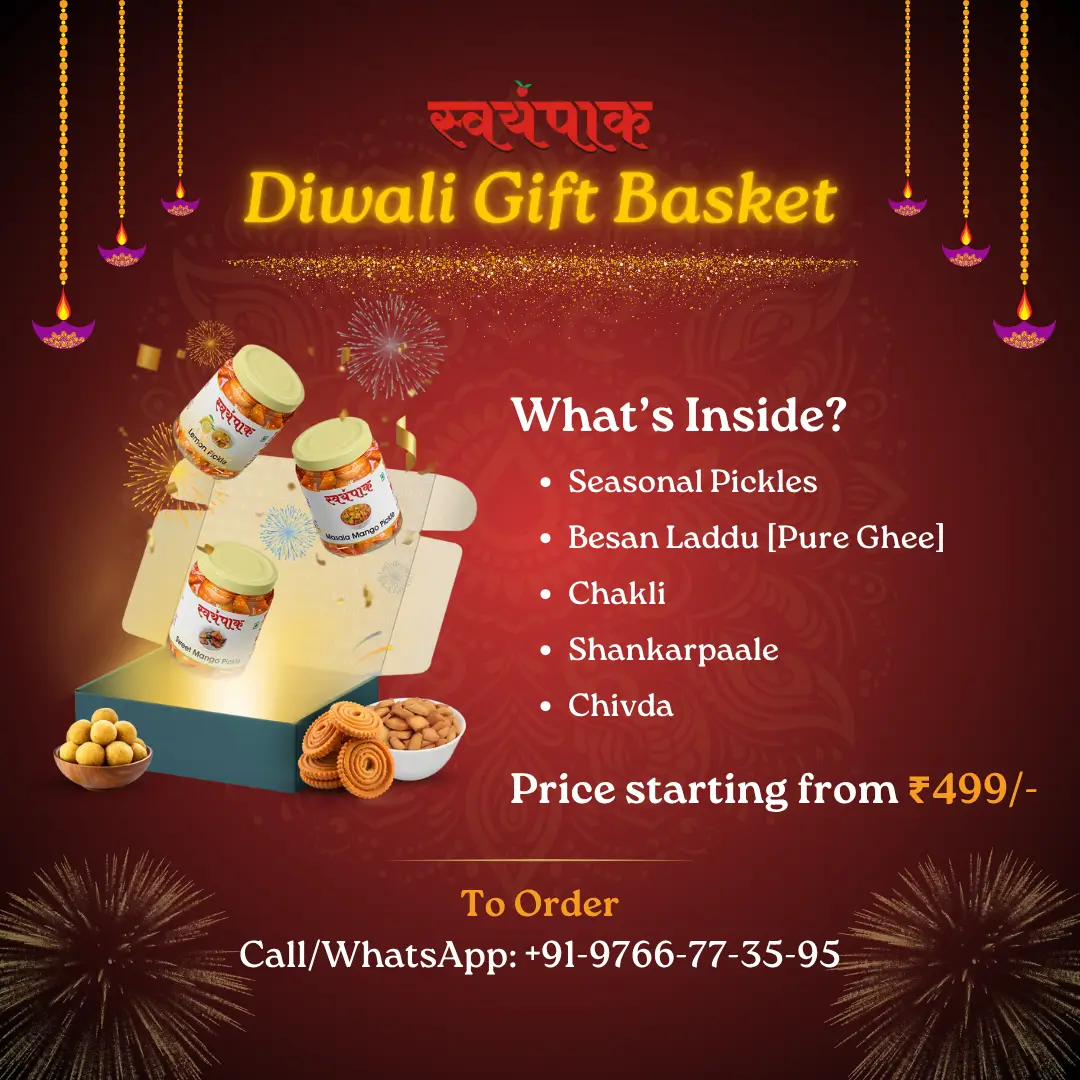Moong dal, a type of split lentil, is a staple ingredient in Indian cuisine. While both green and yellow moong dal are nutritious and versatile, they offer distinct flavours and nutritional profiles. In this article, Green Moong Dal vs Yellow Moong Dal, we will delve into the key differences between these two varieties, helping you choose the right one for your culinary adventures.
Key Takeaways from the Green Moong Dal vs Yellow Moong Dal:
Moong dal is a versatile Indian staple. It offers various nutritional benefits and can be used in many dishes.
- Green and yellow moong dal have distinct flavours: green moong dal is slightly earthy and nutty, while yellow moong dal is milder and sweeter.
- Both are rich in nutrients: They are excellent sources of protein, fibre, vitamins, and minerals.
- The texture varies: green moong dal retains its shape better, while yellow moong dal becomes softer when cooked.
- Choose based on personal preference: The best moong dal for you depends on your desired flavour and texture.
- Incorporate into your diet regularly: Enjoy the health benefits of moong dal by including it in your meals.
- Experiment with different recipes: Discover the versatility of moong dal by trying various dishes.
Green Moong Dal vs Yellow Moong Dal
Moong dal, a type of split lentil, is a staple ingredient in Indian cuisine and is renowned for its versatility and nutritional value. While both green and yellow moong dal are popular choices, they offer distinct flavours and nutritional profiles. This blog post will delve into the key differences between these two varieties, helping you choose the right one for your culinary adventures.
Importance of Lentils in Indian Cuisine
Lentils, or dals as they are commonly known in India, hold a central place in the country’s culinary heritage. They are a staple food, providing a valuable source of protein, fibre, and essential nutrients. Here’s why lentils are so important in Indian cuisine.
- Nutritional Powerhouse: Lentils are packed with protein, making them a great alternative to meat, especially for vegetarians and vegans. They are also rich in fibre, which aids digestion and promotes satiety. Additionally, lentils contain essential vitamins and minerals like iron, potassium, and magnesium.
- Versatility: Lentils come in various colours and textures, each with its unique flavour profile. This versatility allows them to be used in a wide range of dishes, from hearty curries to refreshing salads.
- Cultural Significance: Lentils have been a part of Indian cuisine for centuries, deeply ingrained in its cultural and religious traditions. They are often served at special occasions and festivals, symbolizing prosperity and abundance.
- Accessibility and Affordability: Lentils are relatively inexpensive and widely available throughout India, making them a practical and accessible food source for people from all walks of life.
The purpose of comparing green moong dal and yellow moong dal is to highlight their unique characteristics and help you make informed choices when cooking with them. By understanding the differences in their nutritional profiles, flavours, and uses, you can select the best variety for your specific needs and preferences.
Common Uses in Indian Cuisine: Green Moong Dal vs Yellow Moong Dal
Green Moong Dal
- Sprouted: Green moong dal is often sprouted and eaten raw or cooked. Sprouted moong dal is a nutritious and refreshing ingredient, often added to salads, sandwiches, and smoothies.
- Dal Makhani: While yellow moong dal is more commonly used for dal makhani, green moong dal can also be used to create a slightly different flavour profile.
- Sambar: Green moong dal is a common ingredient in sambar, a South Indian lentil stew.
- Idli and Dosa: In South Indian cuisine, green moong dal is sometimes combined with urad dal to make idli and dosa batter.
Yellow Moong Dal
- Dal Makhani: Yellow moong dal is the primary ingredient in dal makhani, a rich and creamy lentil dish that is a staple in North Indian cuisine.
- Mung Dal Khichdi: Yellow moong dal is often used to make khichdi, a simple and comforting rice and lentil dish.
- Payasam: Yellow moong dal is sometimes used to make payasam, a sweet dessert porridge.
- Sundal: Yellow moong dal is a popular ingredient in sundal, a South Indian snack made by steaming lentils and mixing them with spices.
Cooking Tips
- Soaking: Soaking the lentils before cooking helps to reduce cooking time and improves their texture.
- Pressure Cooking: Pressure cooking is a quick and efficient way to cook lentils, especially for dishes like dal makhani.
- Tempering: Tempering with spices and aromatics can add depth and flavour to lentil dishes.
- Balancing: Be mindful of the balance between the lentils and other ingredients in your dish to ensure a harmonious flavour profile.
Green Moong Dal vs Yellow Moong Dal: A Comparison
Key Differences
- Colour: Green moong dal is, as the name suggests, green in colour, while yellow moong dal is yellow or pale orange.
- Taste: Green moong dal tends to have a slightly earthy and nutty flavour, while yellow moong dal has a milder and sweeter taste.
- Texture: Green moong dal retains its shape better when cooked, while yellow moong dal tends to become softer and more mushy.
Similarities and Common Uses
Despite their differences, green and yellow moong dal share several similarities:
- Nutritional value: Both are rich in protein, fibre, vitamins, and minerals.
- Versatility: They can be used in a wide variety of dishes, from curries and soups to salads and desserts.
- Cooking methods: Both can be cooked using similar methods, such as pressure cooking, boiling, or soaking.
Nutritional Comparison
| Nutrient | Green Moong Dal | Yellow Moong Dal |
|---|---|---|
| Protein | High | High |
| Fiber | High | High |
| Iron | Good | Good |
| Folate | Good | Good |
| Vitamin B1 | Good | Good |
| Potassium | Good | Good |
| Calcium | Moderate | Moderate |
| Fat | Low | Low |
While both green and yellow moong dal are nutritious, there are some slight differences in their nutritional profiles:
- Protein: Green moong dal is generally slightly higher in protein than yellow moong dal.
- fibre: Both varieties are high in fibre, but yellow moong dal may have slightly more fibre.
- Vitamins and minerals: The vitamin and mineral content of both varieties is similar.
Choosing the Right Moong Dal for Your Needs
The best moong dal for you depends on your personal preferences and the specific dish you are preparing. Understanding their key differences can help you select the best one for your specific needs. Here are some factors to consider:
Green Moong Dal:
- Texture: Tends to be softer and more tender when cooked.
- Flavour: Has a slightly nutty flavour.
- Common Uses:
- Sprouted: Often used in salads, sandwiches, and smoothies for a nutritious and refreshing crunch.
- Dal Makhani: Can be used to create a slightly different flavour profile compared to yellow moong dal.
- Sambar: A popular ingredient in this South Indian lentil stew.
- Idli and Dosa: Sometimes combined with urad dal to make batter for these South Indian delicacies.
Yellow Moong Dal:
- Texture: Generally firmer than green moong dal.
- Flavor: Has a more neutral taste.
- Common Uses:
- Dal Makhani: The primary ingredient in this rich and creamy lentil dish.
- Mung Dal Khichdi: A simple and comforting rice and lentil dish.
- Payasam: A sweet dessert porridge.
- Sundal: A South Indian snack made by steaming lentils and mixing them with spices.
Key Factors to Consider:
- Specific Recipe: Refer to the recipe you’re following for guidance on the recommended type of moong dal.
- Desired Texture: If you prefer a softer lentil, green moong dal is a good choice. For a firmer texture, yellow moong dal is suitable.
- Flavour Profile: Green moong dal has a nutty flavour, while yellow moong dal is more neutral. Choose based on the overall flavour you want to achieve in your dish.
Conclusion
In conclusion, both green and yellow moong dal offer unique qualities and are valuable additions to Indian cuisine. Green moong dal is known for its softer texture and nutty flavour, making it suitable for dishes like sprouted salads and sambar. Yellow moong dal, on the other hand, is prized for its versatility and neutral taste, often used in dal makhani and khichdi.
By understanding their characteristics and common uses, you can confidently select the appropriate moong dal to create delicious and satisfying Indian meals that cater to your preferences.



